The Calgary Flames have underperformed expectations this season. The loss of Johnny Gaudreau and Matthew Tkachuk in the offseason certainly hurt, but they came out of the summer with a roster that was widely expected to be playoff worthy and possibly even a contender. They haven’t lived up to that billing though and, with 13 games left on the schedule, they sit outside the playoffs chasing a wild card spot.
What’s behind the Calgary Flames struggles this season?
Team Performance
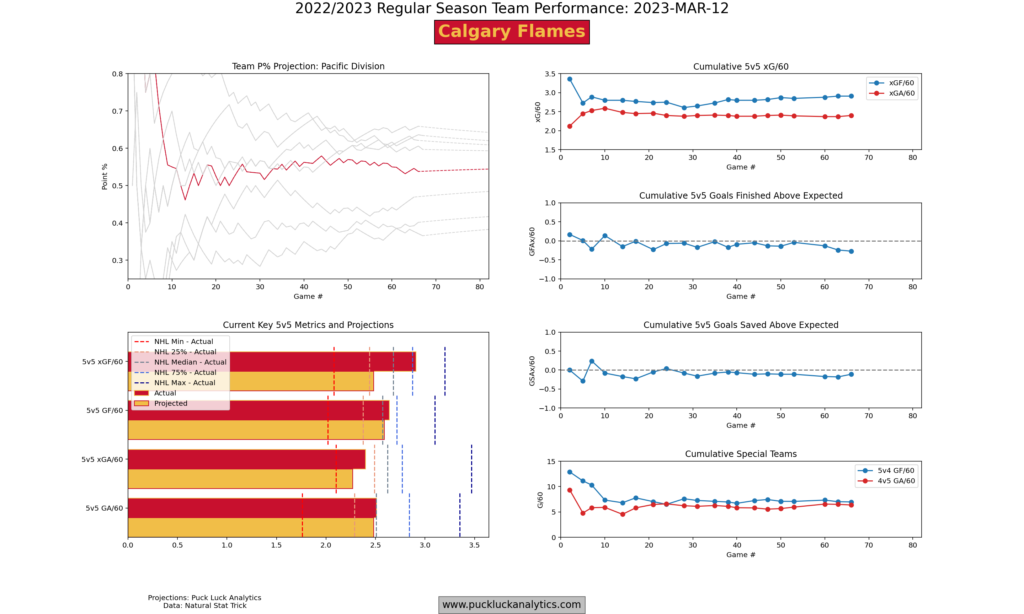
The key 5v5 metrics for the Flames start to give us some insight. They’ve maintained a strong expected goal share at 5v5 all season, which is generally an indication of long term success. Goaltending and finishing appear to be at the heart of their underperformance, with both trending below the break even point all season. Their failure to convert their chances and having their opposition convert at a high rate has eaten away their advantage in expected goal share to the point that their actual 5v5 goal share is hovering just above 50%.
We know that shooting and save percentages are highly susceptible to luck, particularly in small sample sizes. Have the Flames simply been steadily unlucky for most of a season, or is there another issue at play?
Shot Location
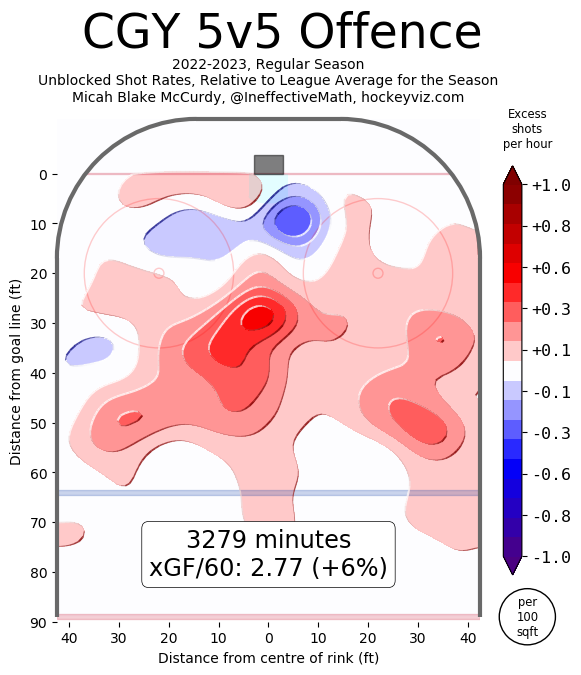
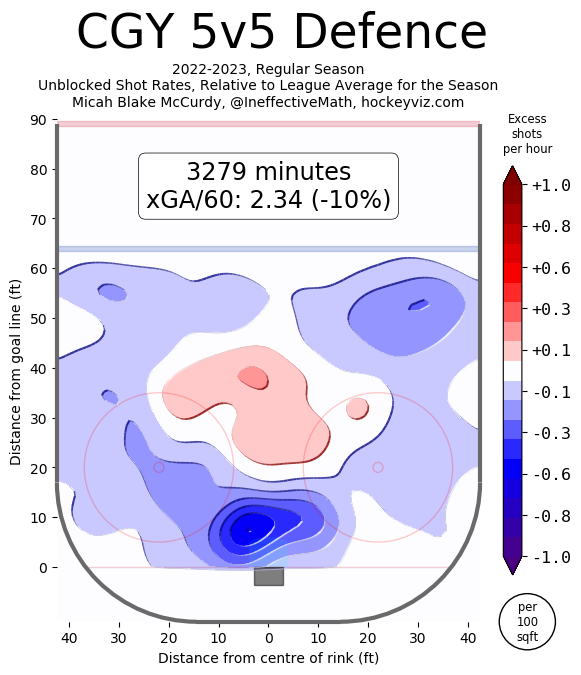
The 5v5 heatmaps from HockeyViz give us a starting point to dig into the Flames tactics to see if there are causes aside from simply luck behind the Flames’ poor shooting and save percentages. On offence, we can see that the Flames don’t generate a lot in and around the crease. Most of their offence is generated from higher in the slot and from the points.
In their own end, it’s similar story. The Flames defend the front of the net well, and their opposition generates most of their offence from further out. It looks like perhaps opponents don’t use the points as much but, similar to the Flames offence, the high slot is the primary source for offence creation.
Shot Quality
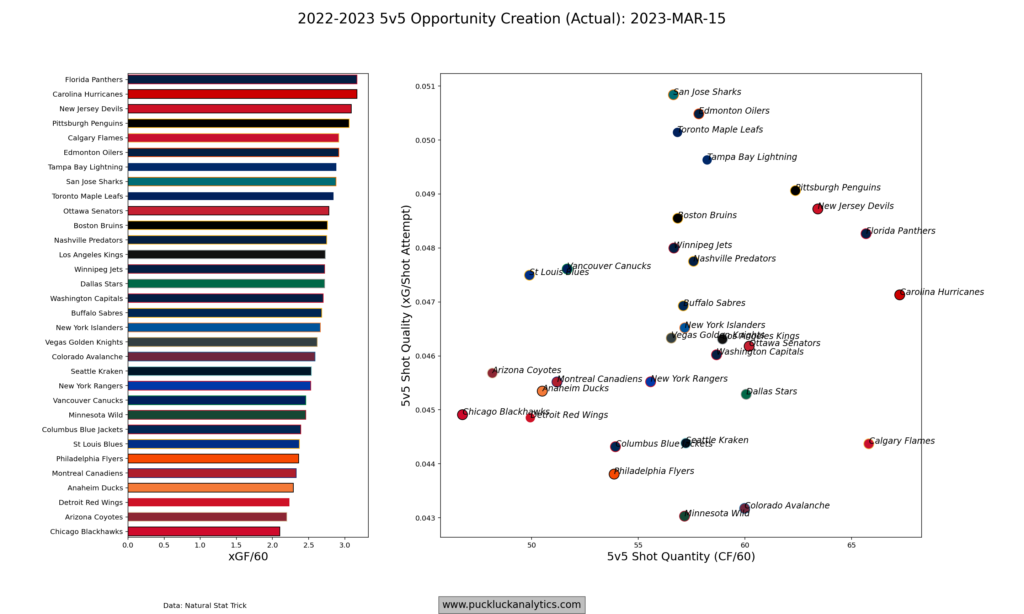
We saw in the HockeyViz heatmap that the Flames offence is better than league average in terms of xGF/60. Natural Stat Trick‘s expected goal model shows the same, with the Flames ranking comfortably within the top 10 for xGF/60 at 5v5. If we dig deeper and look at how the Flames generate expected goals, we can start to see why their shooting percentage has been consistently low this season.
The Flames generate offence using a high volume of low quality shots. This fits with what we saw in the HockeyViz heat map, with shots primarily coming from the high slot and the points. It also explains why their shooting percentage has remained low all season since we’d expect a low shooting percentage from low quality shots.
It manifests in individual statistics as well. Looking at the 5v5 goal and assist rates for the Flames forwards and defensemen relative to the rest of the league, there are some interesting trends. The Flames have four defensemen who are significant outliers relative to their peers with similar TOI/GP in terms of 5v5 G/60. Meanwhile, the Flames defensemen are underperforming their peers in assist rate. It’s a bit less dramatic for the forwards, but we can see the opposite trend in the group as a whole with better assist rate and lower goal rate compared to the rest of the league. Altogether, it appears that there may be a strategic element to this where forwards are moving the puck to the point and defensemen are encouraged to take shots.
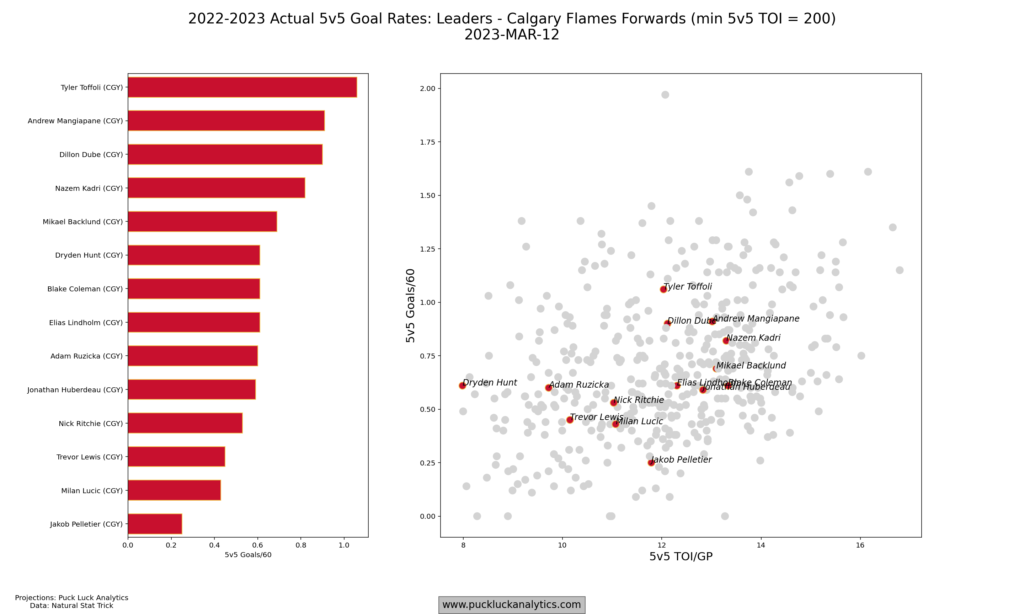
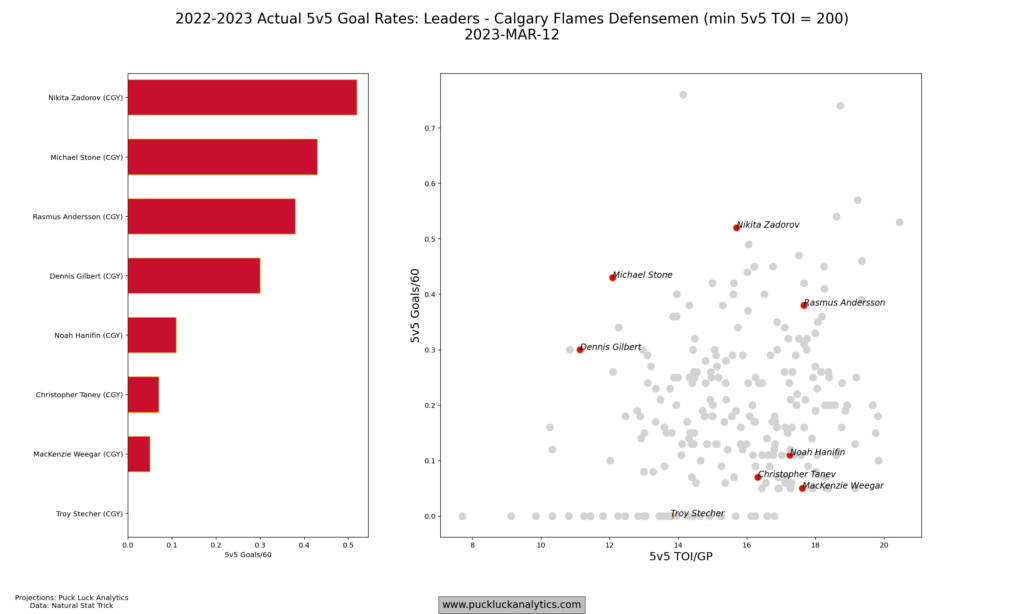
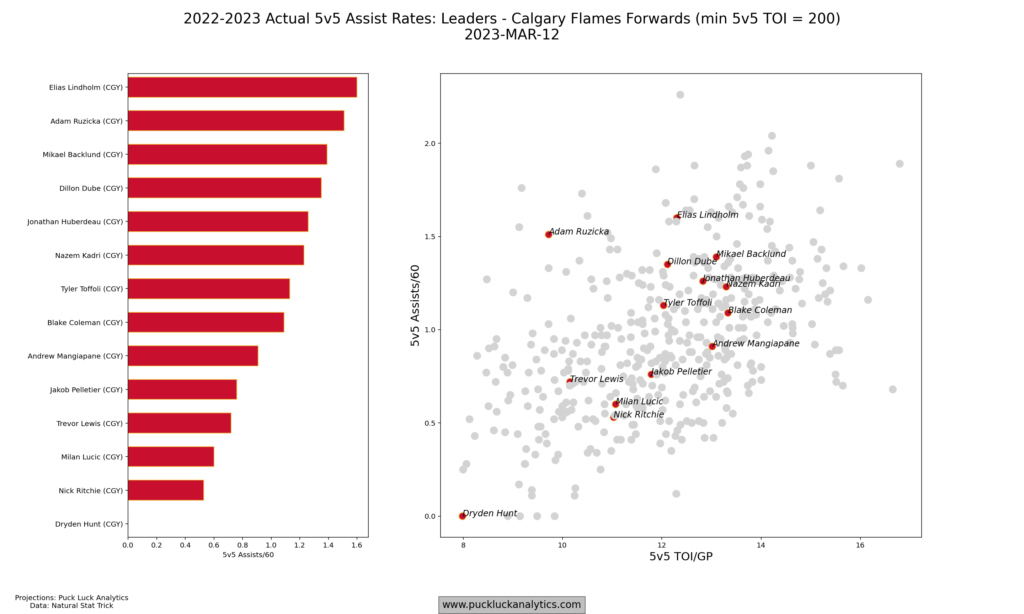
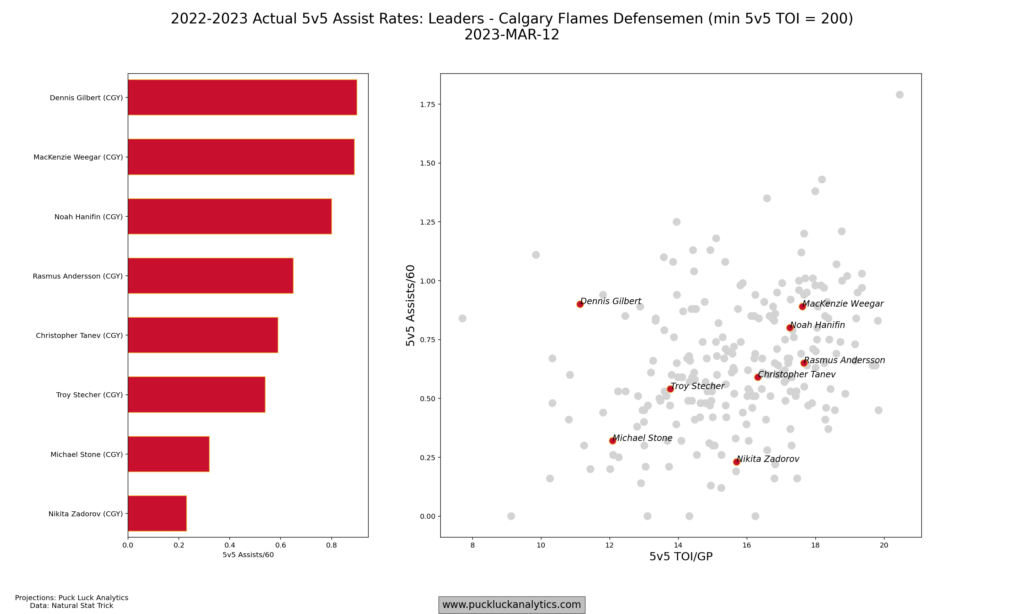
Shifting gears to look at the Flames’ defense and save percentage, we can use a similar thought process as above to understand their team save percentage. Relative the rest of the NHL, the Flames are among the league leaders in limiting 5v5 expected goals against. They are very good at limiting shot quantity by their opposition, however they allow a relatively high average shot quality. Similar to what we saw with shooting percentage, it’s the shot quality that helps us understand why the Flames save percentage has been treading water below league average. Giving up high quality shots is going to result in lower save percentage.
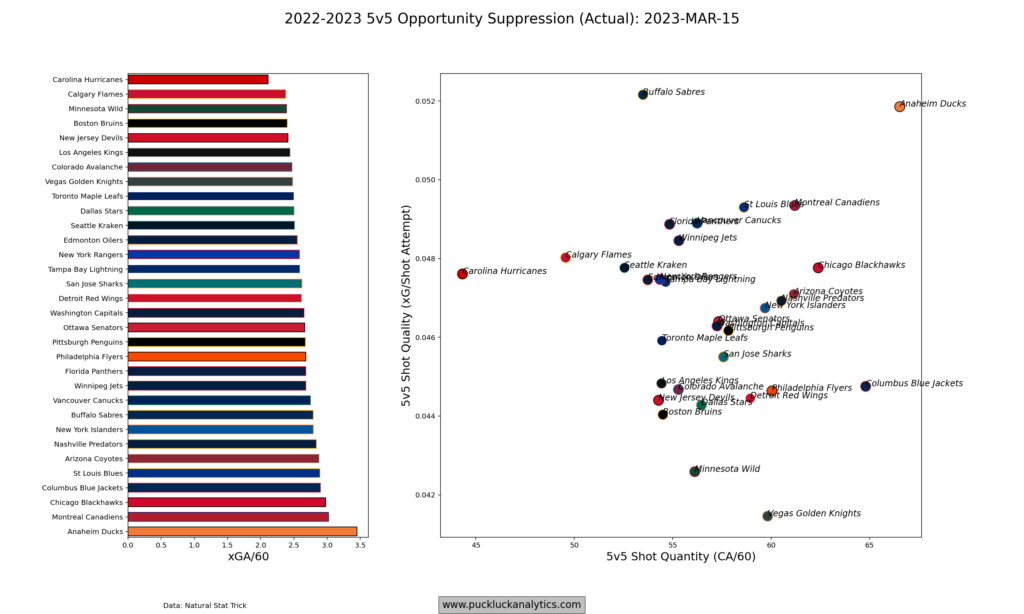
Tactics
Prior to the analytics era, the prevailing mindset to beat a hot goaltender was to get pucks to the point and look for screens and tips. As analytics have shaped the game in recent years, strategies to create offence have evolved. When expected goal models first appeared, shot location was the single most important input to understanding the danger of a scoring chance. As more data has become available, the models have evolved and our understanding of offence creation has as well. There are now other factors that may be just as important as shot location. Pre-shot movement is a big focal point now, and we see teams looking to create movement in order to maximize their offence.
The body of evidence for the Flames 2022-2023 season strongly suggests a concerted effort by the Flames to use what might now be considered ‘old school’ tactics. There seems to be a concerted effort to get pucks to the point and generate offence from point shots. They seem to prioritize shot volume at both ends of the ice, while shot quality takes a back seat. And they seem to double down on this strategy when they fall behind.
Going back to the heat maps from HockeyViz, the difference is stark between the Flames and a teams like the New Jersey Devils and Toronto Maple Leafs that seem to have embraced analytics in full. The Flames double down on low quality shots from the outside when they are behind, while the Devils and Leafs offence is generated at the net front and the middle of the ice. The Flames give up the middle of ice when leading, while the Devils and Leafs lock it down.


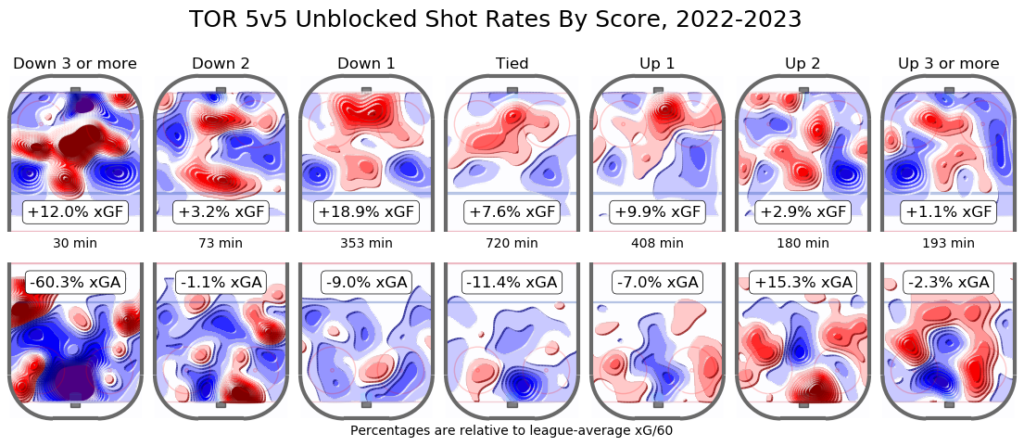
It may not be the only issue in Calgary, but tactics certainly appear to be a contributing factor to the Flames underperforming this season.




